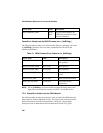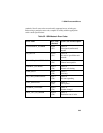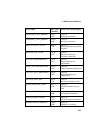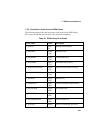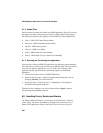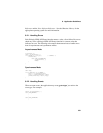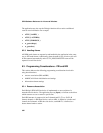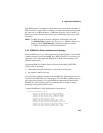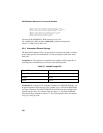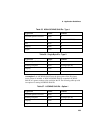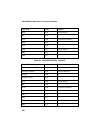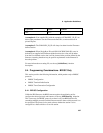ISDN Software Reference for Linux and Windows
350
8.1.2. Header Files
Various header files must be included in an ISDN application. These files provide
the equates, structures, and prototypes needed to compile application programs.
The following header files are typically used for ISDN call control applications:
• cclib.h - ISDN Call Control library defines
• isdncmd.h - ISDN command structure defines
• isdnlib.h - ISDN library headers
• isdnerr.h - ISDN error defines
• srllib.h - SRL headers for event handling
• dtilib.h - DTI headers for layer 1 board device handling
8.1.3. Aborting and Terminating the Application
Upon aborting a Dialogic ISDN API application, the operating system terminates
the current process, but may leave devices in an unknown state. This may result in
errors the next time the application is run. To avoid errors of this type, the
application should trap the following terminating signals to terminate the
application:
1. Disconnect all active calls (in CONNECTED state).
2. Abort all calls in progress, either by dropping and releasing the call or by
issuing cc_Restart( ) on each line device.
3. Set the line state to "Out of Service" or "Maintenance" if that option is
available in the protocol being used.
When the process completes, any device claimed with cc_Open( ) must be
released using the cc_Close( ) function.
8.2. Handling Errors, Events and Alarms
The Dialogic ISDN API library is an extension of the DTI library. Therefore,
events, errors, and alarms are handled by the application in the same way as
Dialogic DTI applications. Refer to the Digital Network Interface Software



